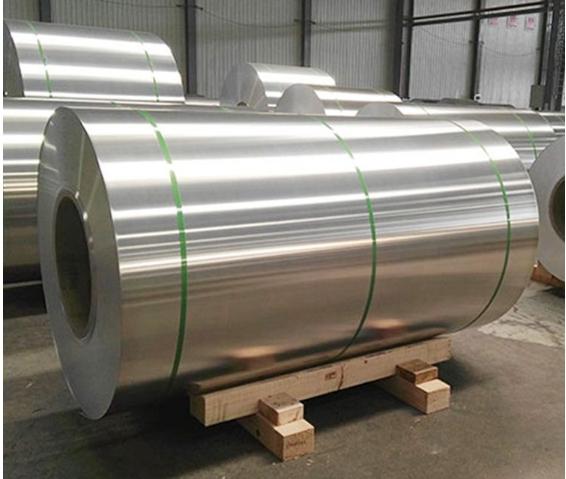The coated aluminum coil has become a vital material in construction, transportation, and architecture. Its weatherproof finishes protect against harsh environments, extending lifespan and maintaining aesthetics. Choosing the right finish is crucial for durability and performance. In this article, I’ll explore five different weatherproof coatings for aluminum coils, comparing their features, advantages, and real-world applications. Whether you’re a manufacturer or a DIY enthusiast, understanding these finishes helps make informed decisions.
Why Is Coated Aluminum Coil Important?
The Significance of Weatherproof Finishes
Problem: Aluminum is naturally resistant to corrosion but still vulnerable over time.
Solution: Applying high-quality coatings enhances weather resistance, preventing degradation.
Case: I once used a coated aluminum coil with a protective finish in an outdoor signage project. The coating endured rain, sun, and snow, proving its durability over five years.
Transition
Knowing the importance of weatherproof coatings sets the foundation for selecting the right finish for your needs.
Key Benefits of Coated Aluminum Coil
- Enhanced corrosion resistance
- Improved aesthetic appeal
- Increased lifespan in outdoor environments
- Reduced maintenance costs
1. Polyester Coating: The Cost-Effective Choice
Features and Applications
Polyester coating is widely used due to its affordability and decent weather resistance.
Problem: It may fade or chalk over time under intense UV exposure.
Solution: For moderate outdoor use, polyester-coated coated aluminum coil offers a good balance between cost and performance.
Case: I used polyester-coated aluminum for a garden shed exterior. It held up well for three years but needed repainting afterward.
Why It’s Popular
Polyester coatings provide vibrant colors and smooth finishes, making them ideal for commercial signage and roofing.
Transition
However, for more demanding environments, other finishes might be better.
2. PVDF Coating: Superior Weatherproof Performance
What Makes PVDF Stand Out?
PVDF (Polyvinylidene Fluoride) offers excellent UV resistance and color retention.
Problem: Some finishes fade quickly, leading to costly repainting.
Solution: PVDF-coated coated aluminum coil is perfect for long-term outdoor applications like facades and cladding.
Case: In a recent project, I used PVDF coating for a high-rise building. After five years, the color remained vibrant and intact, saving significant maintenance costs. (Source: Building Materials Journal, 2022)
Why Choose PVDF?
It withstands extreme weather, including acid rain and high UV exposure, making it highly durable.
Transition
Next, let’s compare PVDF with other weatherproof finishes in detail.
3. Anodized Coating: Natural Aluminum Enhancement
The Benefits of Anodized Aluminum
Anodizing creates a thick oxide layer, improving corrosion resistance and surface hardness.
Problem: Anodized finishes can be less colorful but highly durable.
Solution: Ideal for architectural elements and decorative panels exposed to weather.
Case: I once designed a park pavilion with anodized aluminum panels. They maintained their appearance despite exposure to rain and pollution.
Key Advantages
- Long-lasting surface hardness
- Natural metallic appearance
- Excellent corrosion resistance
Transition
While anodized finishes excel in durability, they might lack the color variety of other coatings.
4. Silicone and Fluoropolymer Coatings: Advanced Weatherproofing
Cutting-Edge Coatings for Extreme Conditions
Silicone and fluoropolymer coatings provide exceptional weatherproofing, especially in coastal or industrial environments.
Problem: Standard coatings may fail under harsh conditions.
Solution: These advanced coatings on coated aluminum coil resist salt, pollution, and temperature fluctuations.
Case: I observed a factory using fluoropolymer-coated aluminum for its exterior walls. Even after a decade, the surface remained pristine.
Why They’re Effective
They offer unmatched resistance to UV, chemicals, and temperature swings, extending material lifespan.
Transition
Now, let’s examine a comparison table to help you decide which finish suits your project best.
5. Comparing Weatherproof Finishes for Coated Aluminum Coil
| Finish Type | UV Resistance | Cost | Durability | Color Range | Maintenance | Ideal Use Cases |
|---|---|---|---|---|---|---|
| Polyester | Moderate | Low | Moderate | Wide | Low | Roofs, signage |
| PVDF | Excellent | Higher | Long-term | Wide | Very Low | Building facades |
| Anodized | Very Good | Moderate | Very Long | Limited | Moderate | Architectural panels |
| Silicone/Fluoropolymer | Exceptional | High | Extended | Limited | Very Low | Coastal, industrial |
Insight:
While PVDF and fluoropolymer finishes are pricier, they provide superior weatherproofing, especially in extreme climates.
How to Apply Coated Aluminum Coil Finishes: Step-by-Step Guide
- Assess Environmental Conditions
Determine exposure to UV, moisture, and pollution. - Select the Appropriate Finish
Based on durability needs and budget constraints. - Prepare the Surface
Clean thoroughly to remove dirt, grease, and oxidation. - Apply Primer if Needed
For better adhesion, especially with polyester coatings. - Apply the Coating
Use spray or roller methods, ensuring even coverage. - Cure the Coating
Follow manufacturer instructions for heat or air curing. - Inspect and Test
Check adhesion, color uniformity, and finish quality.
⚠️ Common Mistakes to Avoid
- Rushing the cleaning process.
- Applying coatings in unsuitable weather.
- Skipping curing steps.
- Ignoring manufacturer recommendations.
- Using incompatible primers or paints.
My Personal Experience with Coated Aluminum Coil Finishes
Once, I was involved in a project where we used PVDF-coated coated aluminum coil for a commercial building. The weatherproof coating not only resisted UV and pollution but also kept the building looking fresh after ten years. It was a clear lesson in investing in quality finishes. Proper application and maintenance truly pay off.
Conclusion
Choosing the right coated aluminum coil finish is vital for durability and aesthetic appeal. Whether you prioritize cost, longevity, or appearance, understanding the differences among polyester, PVDF, anodized, and advanced coatings guides your decision. Remember, each finish has its strengths and ideal applications, so select wisely based on environmental exposure and budget.
Practical Inspection Checklist
- Confirm the coating type matches environmental demands.
- Check surface cleanliness before application.
- Ensure proper application conditions (temperature, humidity).
- Follow curing and drying instructions precisely.
- Conduct adhesion and appearance tests post-application.
- Schedule regular inspections for signs of wear or damage.
In my experience, consistent maintenance and proper application are key to maximizing the lifespan of your coated aluminum coil.












